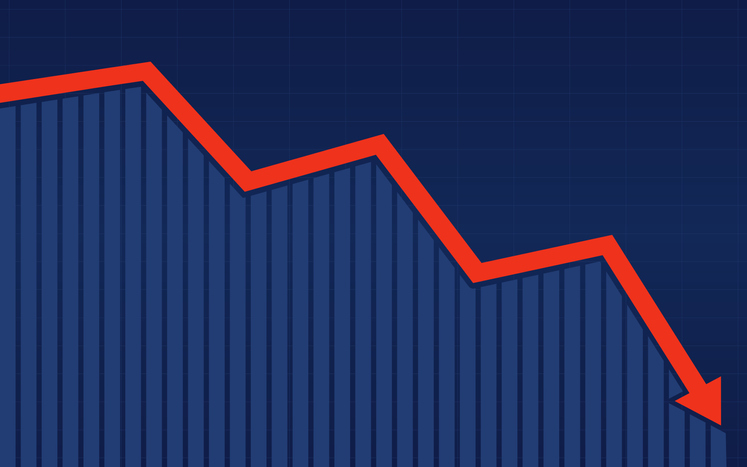Operational changes from switching to Neo WaterFX for phosphorus removal from wastewater.
Making the switch from “traditional” coagulants (iron or aluminum salts) to Neo WaterFX WILL require a few operational adjustments due to improved and simplified operations. These adjustments include:
- Operating at a lower Mixed Liquor Suspended Solids (MLSS) level.
- Maintaining a lower sludge blanket in your clarifier.
- Lower RAS and WAS pumping rates.
- Using less polymer to dewater your biosolids with shorter run times.
- Drastically reducing or eliminating your caustic feed for pH adjustment.
- Less frequent chemical deliveries.
Let’s look at each of these briefly.
Lower Mixed Liquor Suspended Solids.
Traditional coagulants create large quantities of fluffy chemical sludge that increase the amount of solids in your system but are not biologically active. In order to maintain the necessary concentration of Mixed Liquor VOLATILE Suspended Solids (MLVSS) required for BOD and ammonia removal, you have to increase the total amount of suspended solids in your system. The high dosage rates of traditional coagulants required to remove phosphorus to low levels means there is a LOT of this chemical sludge that is biologically inactive, so your MLSS must be much higher.
WaterFX requires fraction, often as little as a tenth of the dosage required for traditional coagulants. Less coagulant used means less chemical sludge, so you can operate at a much lower MLSS while still maintaining the MLVSS required for biological treatment.
Lower sludge blanket in your clarifier.
Less chemical sludge from WaterFX (with a higher relative concentration of MLVSS) means less total solids needing to settle in your clarifier, and so your sludge blanket can be lower while still maintaining the necessary reserve of MLVSS. But even more impactful is the type of chemical sludge. While traditional coagulants create less dense, fluffy sludge that holds water and is slower to settle, creating a high sludge blanket, WaterFX creates a dense crystalline sludge that settles quickly into a denser sludge blanket that takes up less volume. You will also notice a clearer effluent and better clarity in your clarifier. Denser sludge plus less chemical sludge equals lower volume and a lower sludge blanket.
Which leads us to…
Lower RAS and WAS pumping rates.
Denser sludge, with a higher MLVSS concentration, gives you the necessary return VSS with less volume, so you may be able to lower your Return Activated Sludge (RAS) pumping rate. Likewise, less chemical sludge that is denser translates into a lower Waste Activated Sludge (WAS) pumping requirement.
And less WAS leads us to…
Less polymer to dewater your solids with a shorter run time.
This operational change is from two WaterFX advantages. First of course is that you have less chemical sludge to dewater, but the second is actually more important – the characteristics of that chemical sludge.
While traditional coagulants create a fluffy floc that traps water, requiring large quantities of polymer and long run times to get even a moderately dry cake, WaterFX’s dense crystal doesn’t hold water at all. It actually improves the dewatering characteristics of your sludge, requiring less polymer to release the water, and producing a drier cake with shorter run times. Less water in your final cake reduces volume and weight requiring disposal, saving significantly on disposal costs.
Reducing to eliminating the need for pH adjustment, and the caustic feed required.
We have devoted several blogs to this operational advantage because it is often one of the most significant for our clients. The impact of switching to WaterFX on pH is from two factors – less acidity of the WaterFX vs the highly acidic traditional coagulants, and the much lower dosage required. These two factors translate to a very modest impact on your pH. While we can’t guarantee that you can totally eliminate your caustic feed, as that is dependent upon the natural alkalinity of your wastewater as well as your requirement (or not) for ammonia removal, all of our clients have been able to reduce that feed to a very low level. Many have been able to eliminate caustic altogether.
Less frequent chemical deliveries.
With the lower dosage requirement, your deliveries of WaterFX can be less frequent than for traditional coagulants. Add to that the lower caustic requirement, and you will have to get used to less frequent chemical deliveries overall.
Operational changes add up to significant cost savings.
Each of these operational changes also translate into cost savings. From less caustic, to lower sludge disposal costs, and even some modest energy savings from pumping and dewatering operations, add up to make WaterFX not only the operationally simpler choice for phosphorus removal but the overall cost-effective winner. Yes, it will take some operational adjustments, but all these changes are in a positive direction. Our engineers can work with you to optimize these changes during the transition so you can achieve the maximum benefits from making the switch to WaterFX.
So, what are you waiting for?
If you are ready to explore the switch to better compliance, stable, predictable phosphorus removal with improved, simplified operation with cost benefits, contact us. Our engineers will be able to walk you through the process based on YOUR wastewater, and get you started on changes with benefits.



